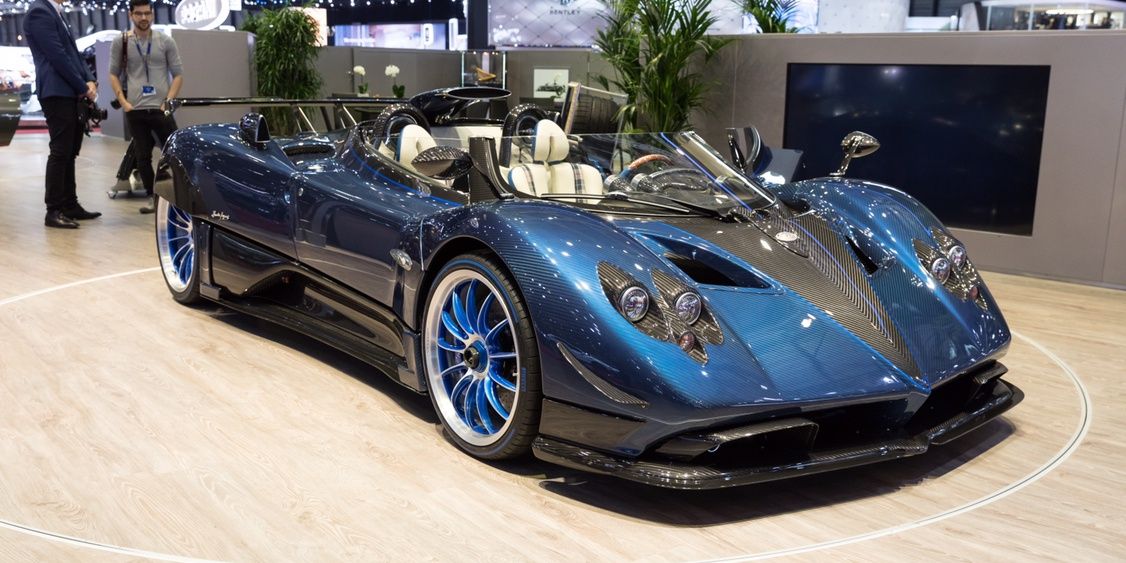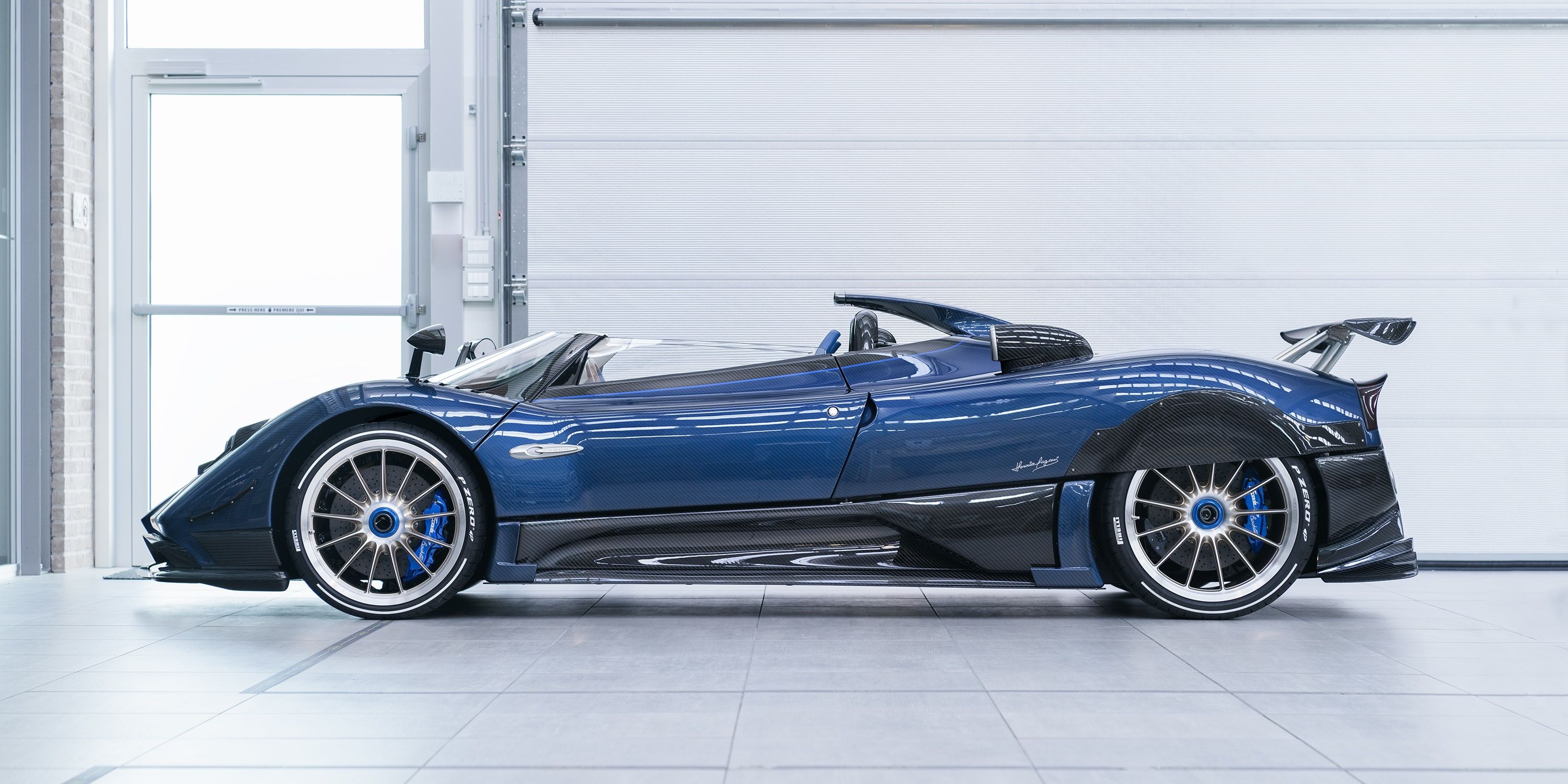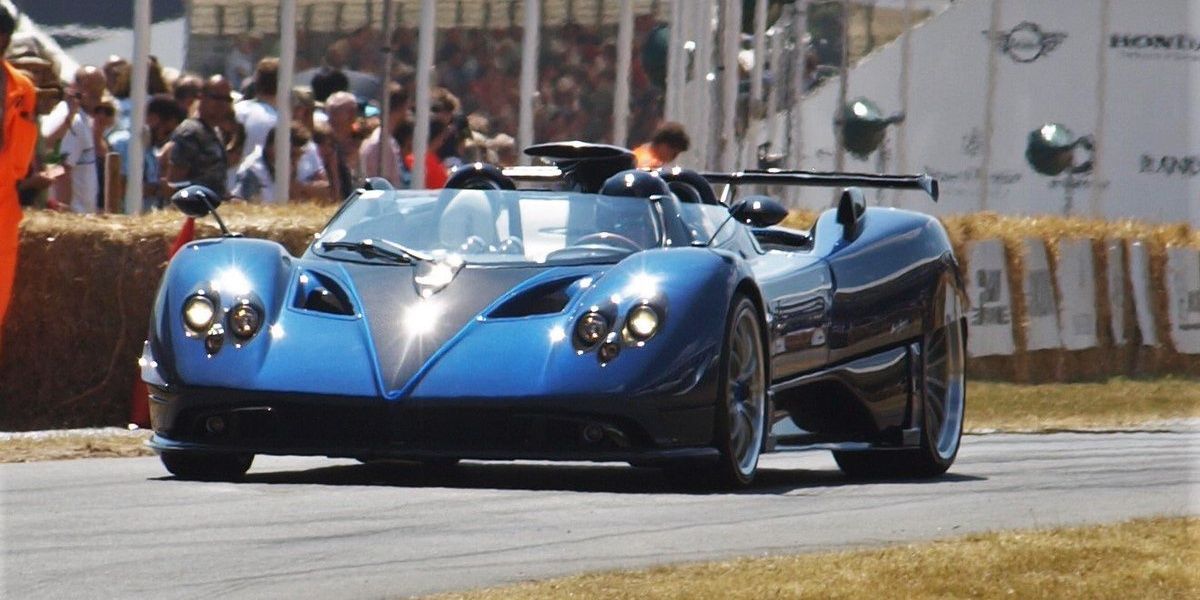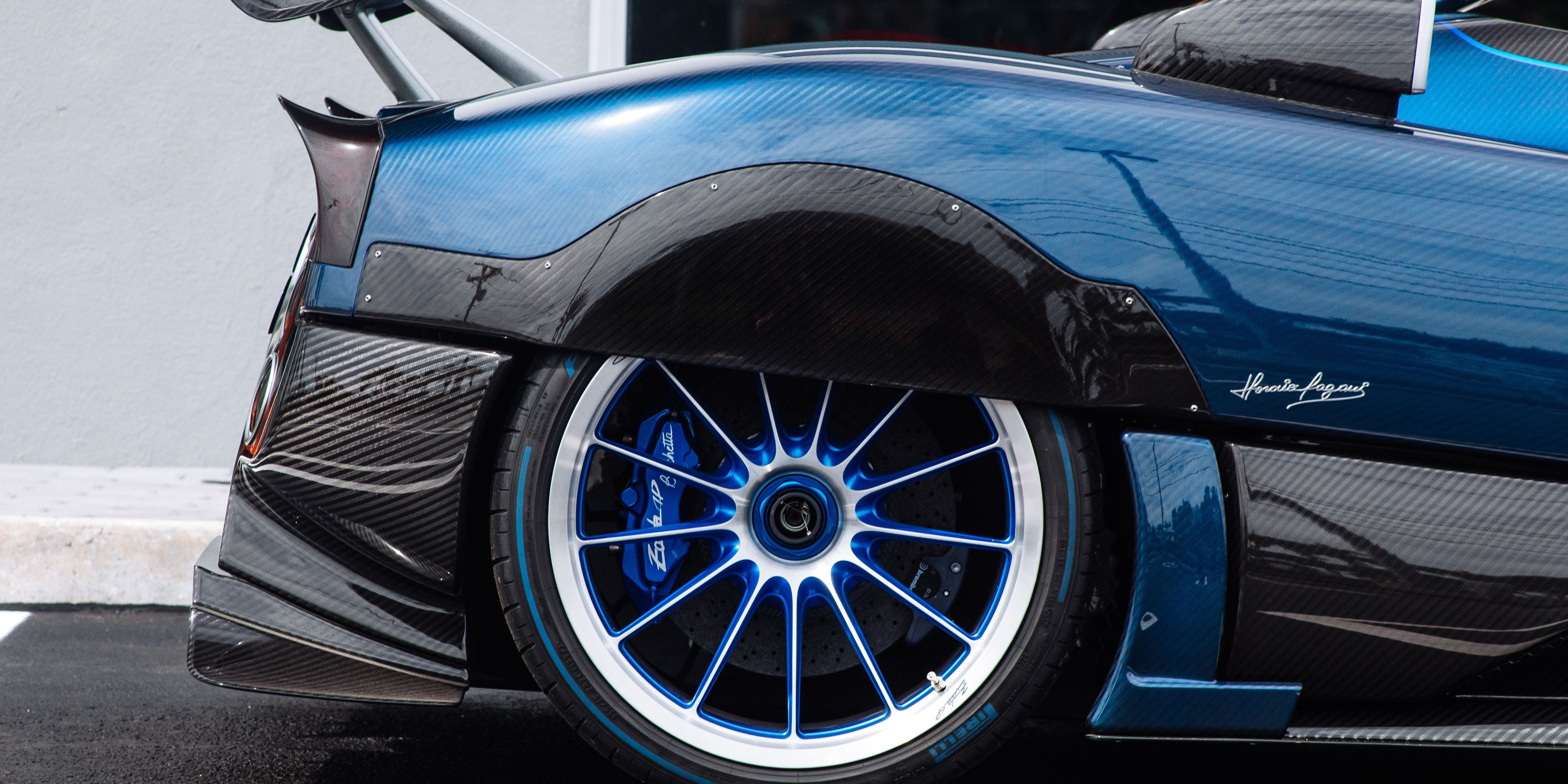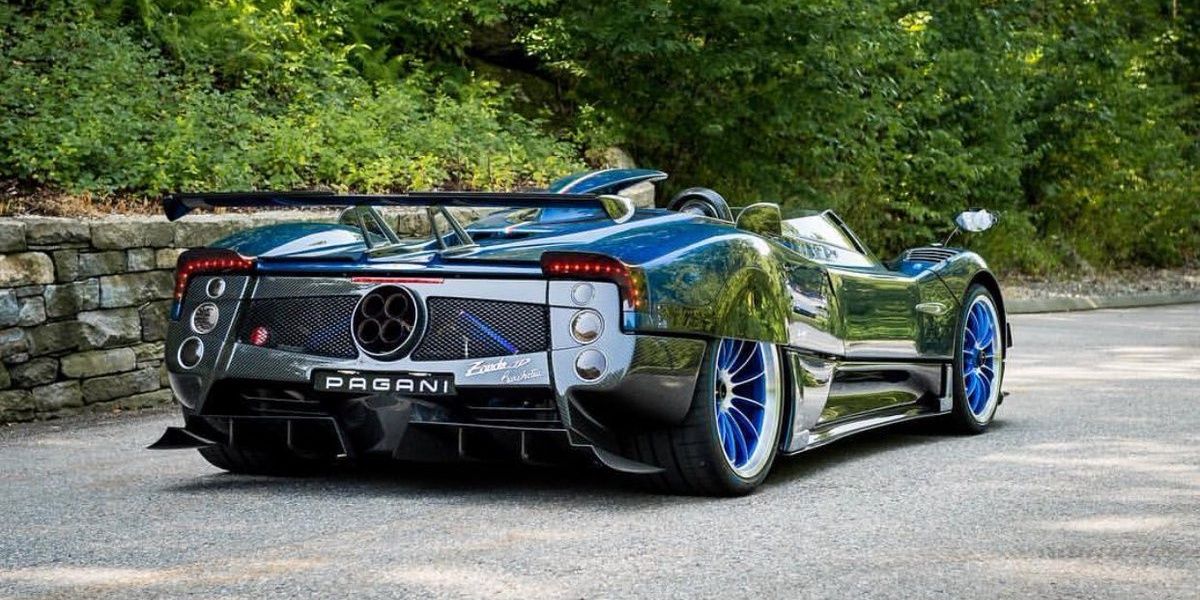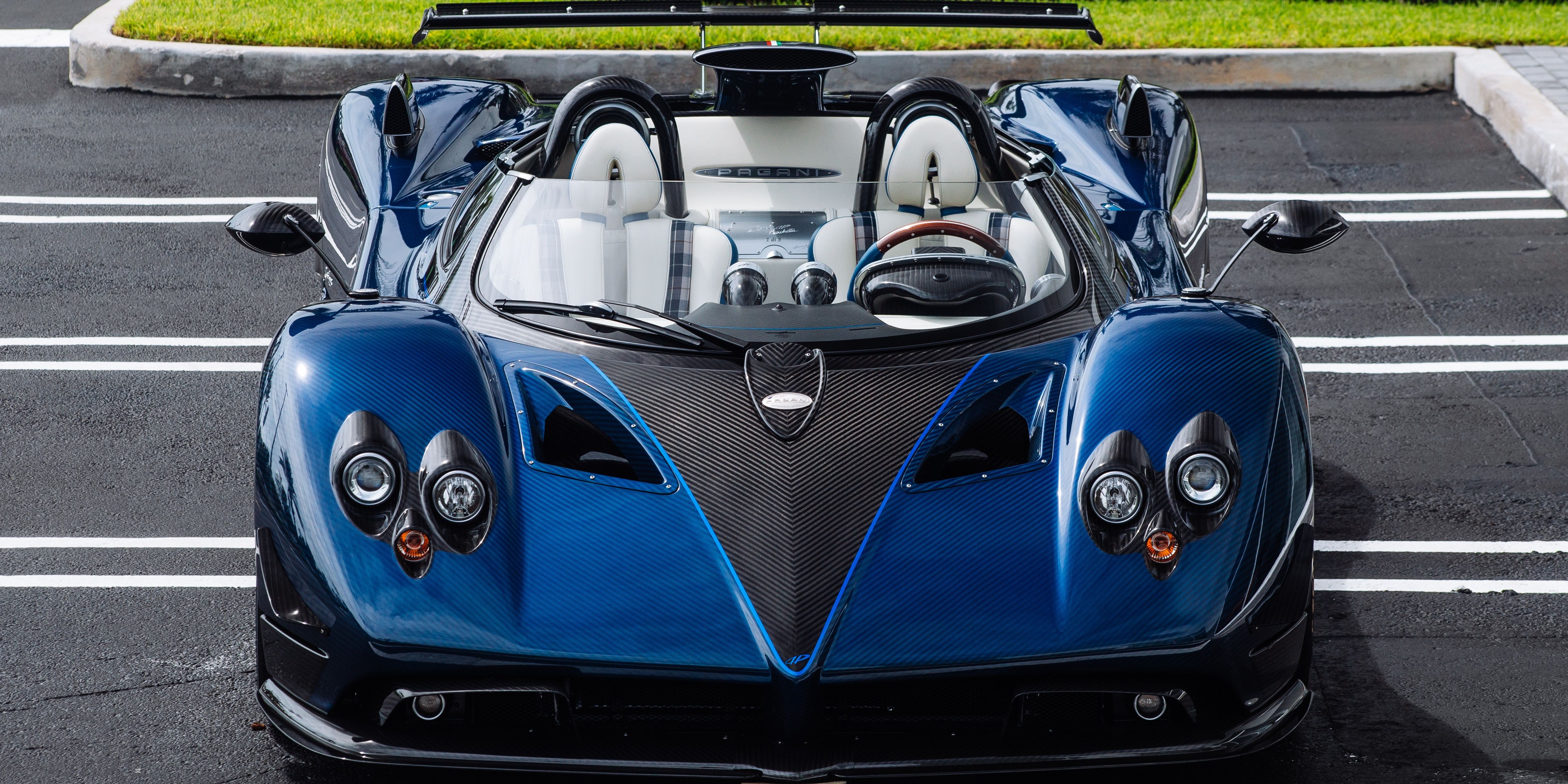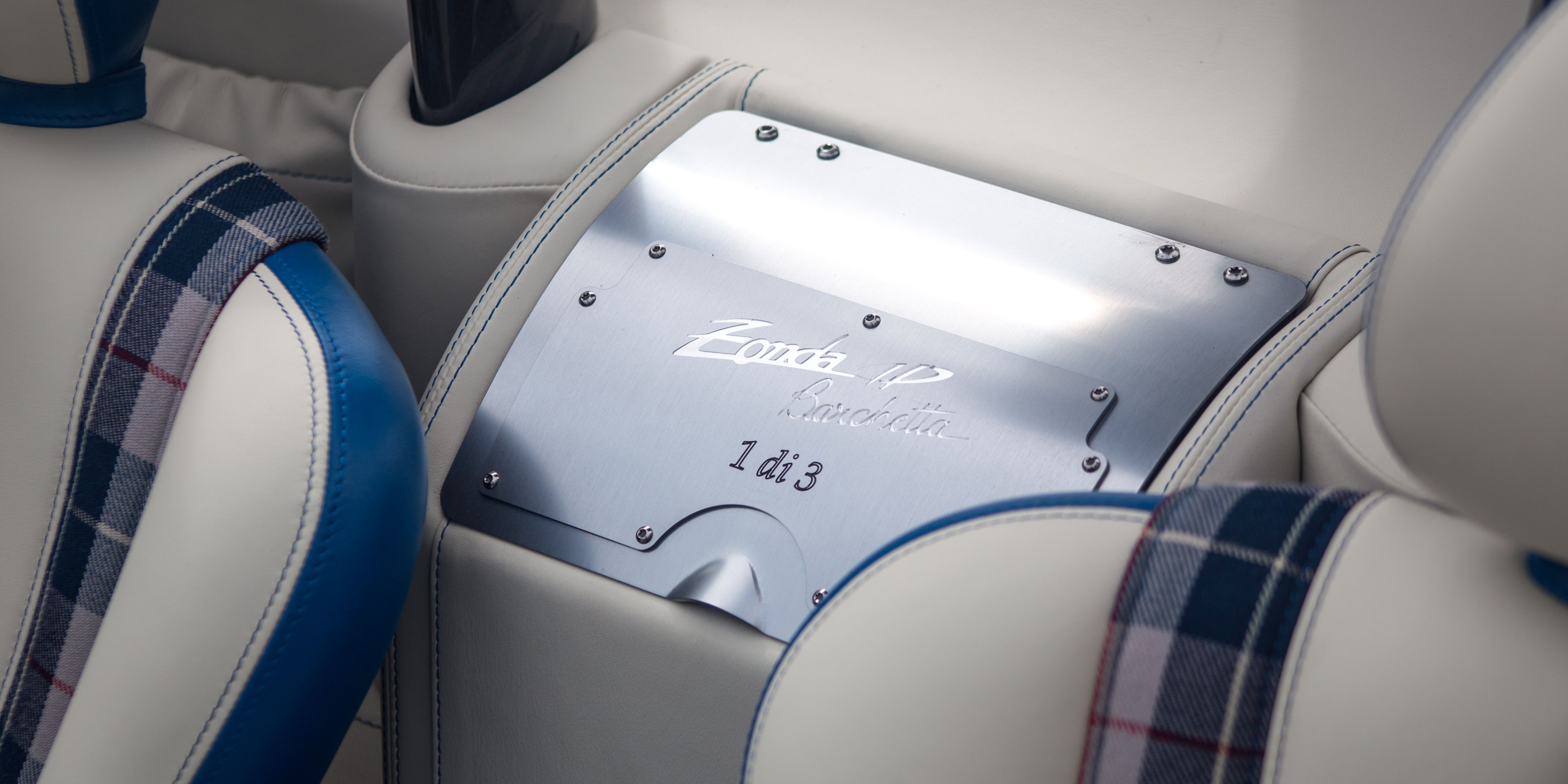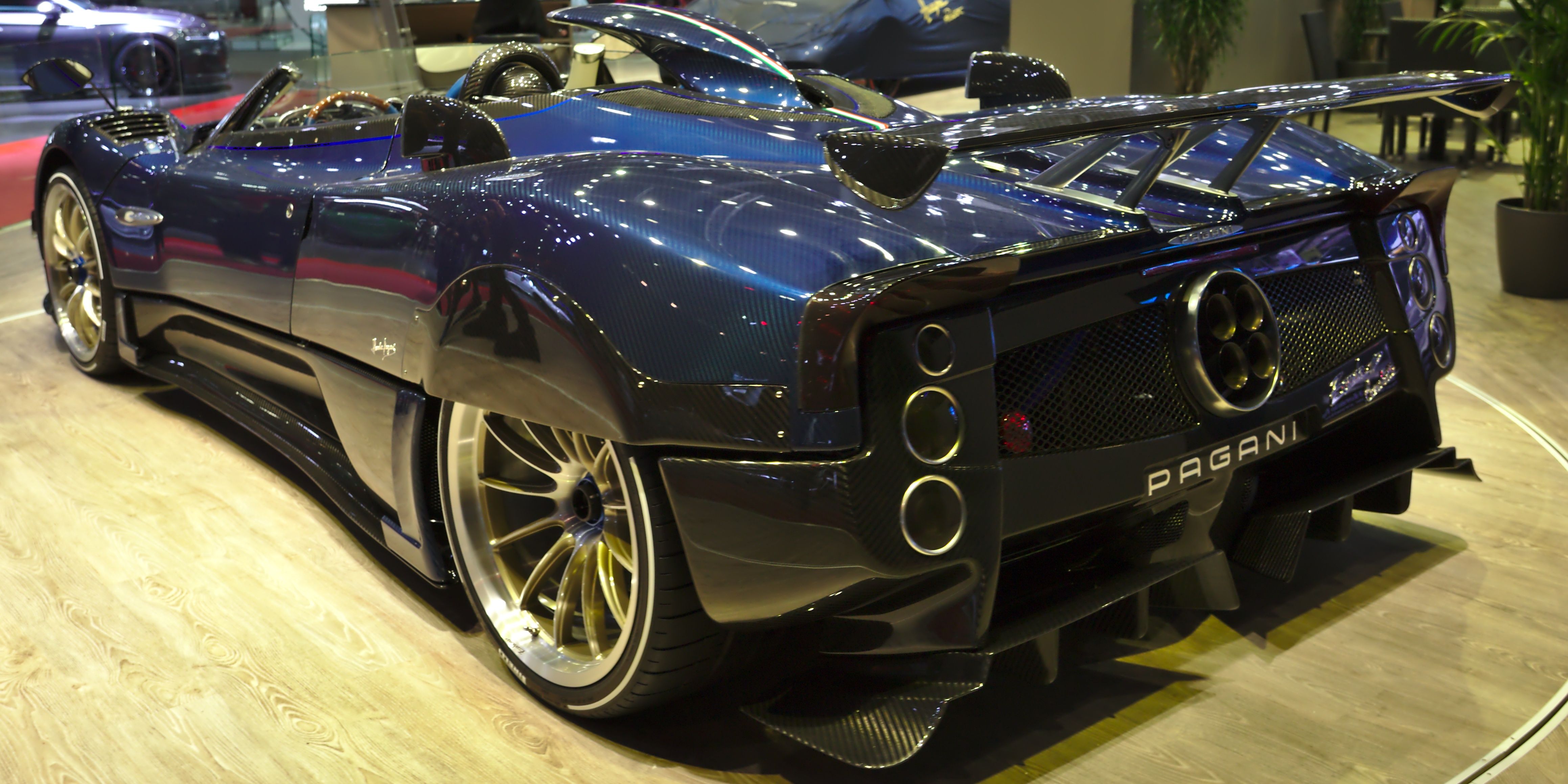Stepping into Pagani's showroom is like stepping into a museum. The cars are pristine, on pedestals, and roped off. Touching is not allowed, but all other senses are amplified by the immaculate beauty of the Pagani lineup. Each car is built to order, there's no mass production happening under Horacio's watch, and it's understandable if he wants to uphold this persona of perfection. Now comes the most prolific example of the Pagani supercar Dynasty, the Zonda HP Barchetta, as the most expensive car in the world.
The Barchetta was reserved by Horacio Pagani (HP) as a present to himself on his 60th birthday. Who can blame him for wanting a $20 million birthday gift?
8 It Packs A 7.3-Liter AMG V12
The Zonda's 2,800-pound curb weight is propelled by the AMG-built 7.3-liter naturally aspirated V12 M297 engine, derived from the AMG M120. Its output is 790 horsepower, which tops the car out at 221 mph and makes it the fastest and most powerful Zonda ever made. That's about as fast as an F1 car on some circuits. Zondas have used different versions of the M120 since 1999, beginning with the Zonda C12 which got 400 horsepower out of the 6.0-liter displacement variant. The M297 uses a block composed of mostly aluminum, with some silicon and a bit of copper. A forged steel crankshaft sits in the belly of the engine, moving zinc-coated, iron-plated aluminum pistons.
7 Huayra BC Suspension
Some aspects were borrowed from the Huayra to make the Zonda feel more at home. The Zonda uses double wishbone suspension made from Avional, an aluminum-copper alloy normally reserved for airframe construction. The suspension is pushrod-actuated, which relies on a series of rockers to keep the car level through a corner, thus eliminating body roll as much as possible. It's a heavier system than what's found on road cars, but thanks to its Avional composition the BC suspension is very light. Some tests of the Huayra saw the car holding onto 2.2 lateral gs. through a turn.
6 Forged Aluminum Wheels
There are a few processed for constructing wheels. Most on the road are from cast aluminum or steel, while others found on more expensive cars may be forged from a single piece of aluminum, which is a more expensive process. The Zonda uses forged aluminum wheels from APP. The biggest difference is the strength difference. A well-cast wheel is plenty strong but has bubbles that form within the material, while a forged wheel is heated and pressurized into its shape, thus offers more dependable structural integrity. Casual driving and even some light track days aren't going to explode a cast wheel, but for how much force the Zonda can exert on its wheels, forged is the better option.
5 Massive Brembo Brakes And P Zero Corsa Tires
The Zonda packs a series 790 horsepower, 221 mph top speed punch on a platform that weighs about 2,800 pounds. It needs serious stopping power, and it comes in the form of massive four and six-piston ventilated disc brakes. Stepping in to provide traction under acceleration and braking is the P Zero Corsa tire from Pirelli. It's not specifically a racing tire, as it's legal to use on the street, but it nevertheless provides a race-ready grip. Pirelli developed it in cahoots with auto manufacturers competing in high-level motorsports. Besides grip, the Corsa uses noise-canceling technology called PNCS which, according to Pirelli, reduces the amount of road noise inside the cabin by half.
4 Carbon Fiber Body
For the first time, Pagani decided to cover the rear wheels. The Zonda does so with carbon fiber. The material is lightweight and extraordinarily strong, but it's also horrendously expensive. Large carbon fiber pieces are normally found on racing cars, while everyday road cars may have a few accented carbon-fiber trim pieces. The Zonda, on the other hand, is completely covered in carbon fiber to keep its weight down. It sits on chrome-moly vanadium steel tubing as it's front and rear subframes. The process for making carbon fiber is arduous, but while it started at $150 per pound, it's now down considerably in price.
3 Wrap-Around Windscreen
A windscreen may typically not be what people point to as being an expensive part of a car. The Zonda's windscreen doesn't stop where A-pillars normally are, it continues to curve around the cockpit. Considering how expensive it is to shape glass to a custom shape, especially inducing curvatures, it's no small expense for Pagani. Another factor to consider with the windscreen is R&D. The Zonda's windscreen had to be tested for safety and to preserve its chic style while providing a windscreen as safe as any other surely cost a lot of money in pure testing and development.
2 Proprietary Pagani Materials
Lotus' Formula 1 team was the first to develop a monocoque chassis, and now that practice has been in use ever since, even with production cars. The Zonda's monocoque chassis is made from a proprietary material called Carbo-Triax HP52, which is a carbo-titanium composite. Pagani touts it as lighter and stronger than even carbon fiber. This material helps to shave potentially hundreds of pounds from the Zonda. It's literally carbon fiber and titanium woven together and can withstand temperatures up to 600-degrees Fahrenheit. Pagani first used this material on the Zonda R, then the Huayra.
1 Exclusivity
Along with the proprietary materials, possibly the biggest factor that makes the Zonda so expensive is exclusivity. Only three HP Barchettas were made, thus it is one of the rarest cars in existence. The engine, brakes, suspension, and bodywork are all tailored for a specific experience that only a few people can enjoy. Unlike mass-produced road cars, where they may collect ten or so recalls over a few years, Pagani cars are built to order, thus are built to perfection. The Zonda HP Barchetta isn't limited to three units, anyone can go and order one, but the price reflects the auto maker's image of exclusivity.

